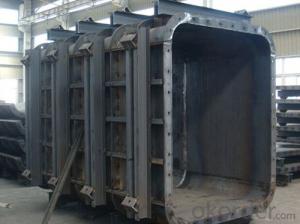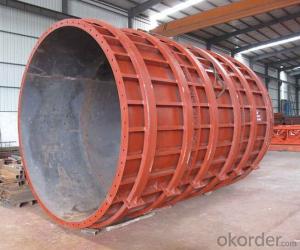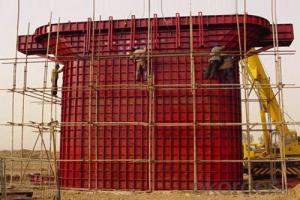Steel Formwork for Water Conservancy and Hydropower
- Loading Port:
- Tianjin
- Payment Terms:
- TT OR LC
- Min Order Qty:
- 100 pc
- Supply Capability:
- 100000 pc/month
OKorder Service Pledge
OKorder Financial Service
You Might Also Like
Introduction for Steel Formwork :
Steel Formwork:used in highway,railway,bridge,tunnel and shearing wall,etc.Our company CNBM which is one of the largest State-Owned Enterprises in China which established in 1984 , has gained the confirmation from the specialist of China Architecture Scence Institute, and has been used by many building operation units and has been highly praised.In 2014, the total turnover volume of CNBM exceeds US$410 billion dollars with a total staff of 180,000. CNBM is listed in the World Top 500 Enterprises !
Characteristic for Wholly Steel Formwork :
1. High Smooth Surface
2. Convex ling for Edge Rib
3. Specialized Connection Pin for Edge Rib Connection
4. High Stiffness for Steel Surface
5. Light Weight for saving producing cost
6. Fast Separate and Easy transport
7. Recycling using
8. Scientific and Reasonable design to meet different working condition
Parameter and Specification :
Code | Size (mm) | Weight (KG) | Code | Size (mm) | Weight (KG) |
P12021 | 1200*2100*55 | 102.96 | P4018 | 400*1800*55 | 28.3 |
P12018 | 1200*1800*55 | 88.4 | P4015 | 400*1500*55 | 23.8 |
P12015 | 1200*1500*55 | 74.15 | P4012 | 400*1200*55 | 19.1 |
P12012 | 1200*1200*55 | 60.11 | P4009 | 400*900*55 | 14.6 |
P10018 | 1000*1800*55 | 76.01 | P4007 | 400*750*55 | 12.3 |
P10015 | 1000*1500*55 | 63.96 | P4006 | 400*600*55 | 9.95 |
P10012 | 1000*1200*55 | 60.11 | P3018 | 300*1800*55 | 20.7 |
P10009 | 1000*900*55 | 39.32 | P3015 | 300*1500*55 | 17.4 |
P9018 | 900*1800*55 | 70.89 | P3012 | 300*1200*55 | 14 |
P9015 | 900*1500*55 | 59.47 | P3009 | 300*900*55 | 10.7 |
P9012 | 900*1200*55 | 48.03 | P3007 | 300*750*55 | 8.8 |
P7518 | 750*1800*55 | 57.8 | P3006 | 300*600*55 | 7.3 |
P7515 | 750*1500*55 | 48.47 | P3004 | 300*400*55 | 5.46 |
P7512 | 750*1200*55 | 39.16 | P2515 | 250*1500*55 | 15.17 |
P7509 | 750*900*55 | 29.85 | P2512 | 250*1200*55 | 12.24 |
P7507 | 750*750*55 | 24.81 | P2509 | 250*900*55 | 9.32 |
P6018 | 600*1800*55 | 43.1 | P2507 | 250*750*55 | 7.71 |
P6015 | 600*1500*55 | 36.3 | P2506 | 250*600*55 | 6.39 |
P6012 | 600*1200*55 | 31.7 | P2015 | 200*1500*55 | 11.6 |
P6009 | 600*900*55 | 23.9 | P2012 | 200*1200*55 | 9.4 |
P6007 | 600*750*55 | 18.55 | P2009 | 200*900*55 | 7.1 |
P6006 | 600*600*55 | 16.25 | P2007 | 200*750*55 | 5.9 |
P5018 | 500*1800*55 | 36.27 | P2006 | 200*600*55 | 6.39 |
P5015 | 500*1500*55 | 30.15 | P2004 | 200*450*55 | 3.64 |
P5012 | 500*1200*55 | 25.55 | P1515 | 150*1500*55 | 9.5 |
P5009 | 500*900*55 | 20.38 | P1506 | 150*600*55 | 4 |
P5007 | 500*750*55 | 15.48 | P1504 | 150*450*55 | 2.98 |
P5006 | 500*600*55 | 13.58 | P1015 | 100*1500*55 | 7.5 |
Code | Size (mm) | Weight (KG) |
P1012 | 100*1200*55 | 6.9 |
P1009 | 100*900*55 | 4.6 |
P1007 | 100*750*55 | 3.8 |
P1006 | 100*600*55 | 3.1 |
P1004 | 100*450*55 | 2.33 |
E1515 | 150*150*1500 | 15.2 |
E1512 | 150*150*1200 | 12.26 |
E1509 | 150*150*900 | 9.34 |
E1507 | 150*150*750 | 7.77 |
E1506 | 150*150*600 | 6.46 |
E1504 | 150*150*450 | 4.87 |
E1015 | 100*150*1500 | 13.13 |
E1012 | 100*150*1200 | 10.61 |
E1009 | 100*150*900 | 8.07 |
E1006 | 100*150*600 | 5.44 |
Y1018 | 100*150*1800 | 14.56 |
Y1015 | 100*150*1500 | 12.29 |
Y1012 | 100*150*1200 | 9.72 |
Y1009 | 100*150*900 | 7.46 |
Y1007 | 100*150*700 | 6.19 |
Y1006 | 100*150*600 | 5.19 |
Y1004 | 100*150*450 | 3.92 |
J0018 | 50*50*1800 | 4.34 |
J0015 | 50*50*1500 | 3.7 |
J0012 | 50*50*1200 | 2.94 |
J0009 | 50*50*900 | 2.3 |
J0007 | 50*50*750 | 1.9 |
J0006 | 50*50*600 | 1.5 |
J0004 | 50*50*450 | 1.13 |
FAQ :
1. Who are we ?
We , CNBM , are a State-Owned Enterprise which established in 1984 , have 32 years experience ,enjoy high reputation .
2. Our Advantage :
Customized products , we have our own R&D department , we can design the drawing and suggest the suitable solution for your project .
3. Our after-Sales Service :
The international Sales Manager and Engineer can go to your job site for work direction and help you deal with your project .
Factory Photos :
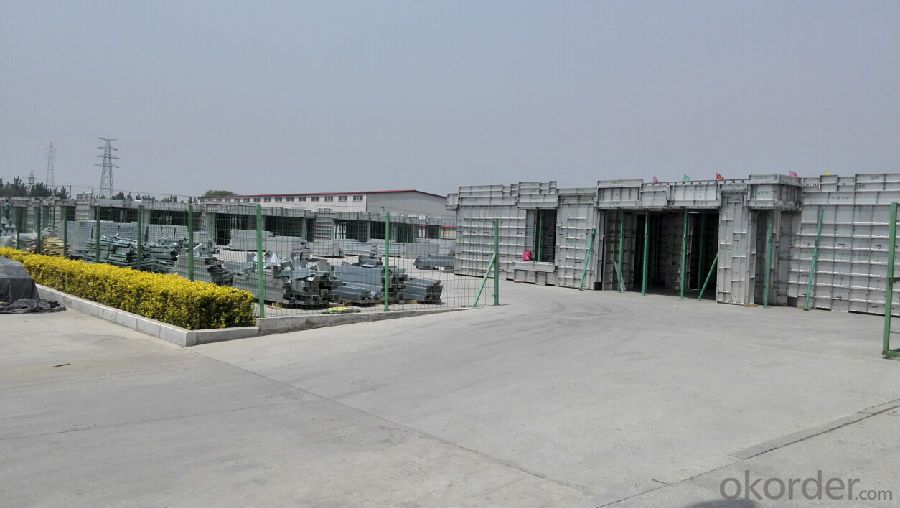


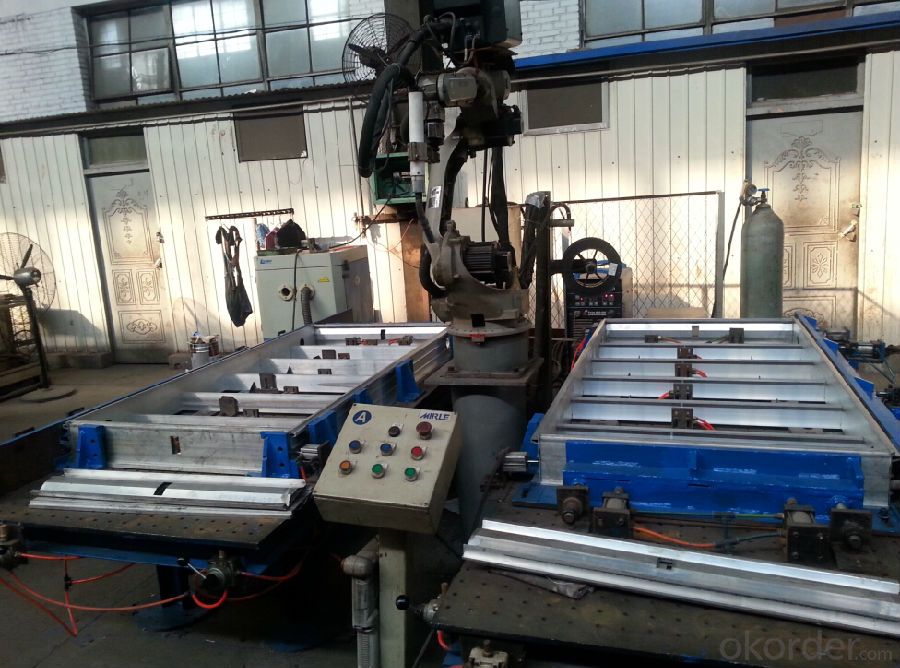
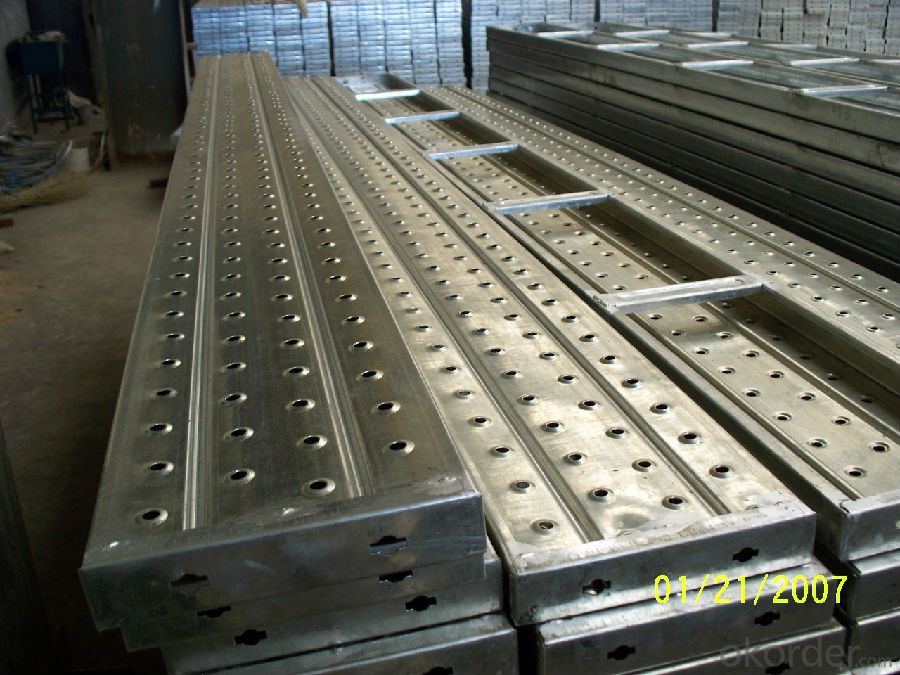
- Q:Can steel formwork be used for hotel construction projects?
- Yes, steel formwork can be used for hotel construction projects. Steel formwork is a versatile and durable solution for constructing concrete structures, including hotels. It offers several advantages such as high strength, durability, and reusability. Steel formwork is capable of withstanding the pressure exerted by wet concrete and can be easily assembled and dismantled, making it suitable for use in various construction projects, including hotels. Additionally, steel formwork provides a smooth and accurate finish to concrete structures, ensuring high-quality construction.
- Q:What are the common quality control measures for steel formwork systems?
- Some common quality control measures for steel formwork systems include conducting regular inspections of the formwork components for any signs of damage or wear, verifying the accuracy of dimensions and alignments, ensuring proper installation and alignment of formwork components, conducting load tests to ensure the formwork system can withstand the required loads, and monitoring the concrete pouring process to ensure proper placement and consolidation. Additionally, adherence to relevant industry standards and guidelines, as well as proper documentation and record-keeping, are also important quality control measures for steel formwork systems.
- Q:How does steel formwork affect the overall construction cost estimate?
- The overall construction cost estimate can be affected both positively and negatively by the use of steel formwork. On the positive side, steel formwork is known for its durability and reusability, which can result in long-term cost savings. Unlike traditional timber formwork, steel formwork can endure multiple uses, reducing the constant need for replacement and decreasing material expenses over time. Moreover, steel formwork offers better dimensional accuracy and stability, leading to quicker construction processes. This can result in shorter project durations and decreased labor costs, ultimately having a positive impact on the overall construction cost estimate. Nevertheless, it is important to consider that steel formwork generally incurs higher initial costs compared to timber formwork. The upfront investment required for steel formwork can be substantial, particularly for large-scale projects. This cost encompasses the acquisition or rental of the steel formwork system, transportation, and installation expenses. Additionally, the assembly and dismantling of steel formwork may necessitate skilled labor, which can contribute to higher labor costs. It is crucial to have experienced workers who are familiar with steel formwork systems, as any errors during the construction process can lead to added expenses and delays. Ultimately, the effect of steel formwork on the construction cost estimate relies on various factors such as the project's scale, duration, and the availability of skilled labor. Though steel formwork may involve higher upfront costs, the long-term advantages of durability, reusability, and enhanced construction efficiency can outweigh these initial expenses and positively impact the overall construction cost estimate.
- Q:How does steel formwork ensure accurate concrete dimensions and alignment?
- Steel formwork ensures accurate concrete dimensions and alignment by providing a rigid and stable structure that holds the concrete in place during the pouring and curing process. The steel formwork is designed and fabricated to precise specifications, allowing for precise shaping and positioning of the concrete. The use of steel formwork also reduces the risk of deformation or shifting during the concrete setting, ensuring that the final dimensions and alignment of the concrete structure are maintained.
- Q:Can steel formwork be used for retaining walls?
- Yes, steel formwork can be used for retaining walls. Steel formwork is a popular choice for retaining walls due to its durability and strength. It provides excellent support and stability to the concrete during the construction process. Steel formwork is capable of withstanding the pressure exerted by the concrete and the soil behind the retaining wall, ensuring that the structure remains intact. Additionally, steel formwork offers flexibility in terms of shape and size, allowing for the construction of various retaining wall designs. Overall, steel formwork is a reliable and efficient choice for retaining walls, offering long-lasting performance and ease of construction.
- Q:How does steel formwork contribute to the overall sustainability of the project?
- There are several ways in which steel formwork contributes to the overall sustainability of a project. Firstly, steel is an incredibly durable material that can withstand heavy loads and repeated use. This means that the same steel formwork can be used for multiple construction cycles, reducing the need for new formwork materials and minimizing waste. Moreover, steel formwork is highly adaptable and can easily be customized to meet various design requirements. This flexibility allows for efficient material usage and reduces the amount of construction waste generated. Furthermore, steel formwork is highly recyclable. When it reaches the end of its life cycle, it can be easily taken apart and recycled. This reduces the demand for new steel production and minimizes the environmental impact associated with mining and manufacturing new materials. Additionally, compared to traditional timber formwork, steel formwork offers better quality control. It provides precise and consistent dimensions, resulting in a final product of high accuracy and quality. This reduces the need for rework and ensures less material wastage. Lastly, the use of steel formwork can lead to shorter construction periods. Its quick assembly and disassembly allow for faster construction processes, reducing the overall energy consumption and carbon emissions associated with the project. To conclude, steel formwork contributes to the overall sustainability of a project through its durability, recyclability, versatility, and efficiency. By reducing waste, minimizing environmental impact, and improving construction processes, steel formwork helps create more sustainable and environmentally-friendly construction projects.
- Q:How does steel formwork contribute to the overall safety of the construction process?
- Steel formwork contributes to the overall safety of the construction process in several ways. Firstly, steel formwork is known for its strength and durability, which ensures that it can withstand the weight and pressure exerted during the construction process. This reduces the risk of formwork failure, which could lead to accidents or injuries on the construction site. Furthermore, steel formwork is designed to provide a stable and secure structure for the concrete to be poured into. The precise alignment and tight joints of steel formwork prevent any leakage or seepage of concrete, reducing the chances of structural instability or collapse. This ensures the safety of the workers and the overall integrity of the building being constructed. Additionally, steel formwork is highly resistant to fire and high temperatures. In the event of a fire on the construction site, steel formwork provides a fire-resistant barrier, protecting the workers and preventing the spread of fire to other areas. This enhances the overall safety of the construction process, as it minimizes the risk of fire-related accidents or injuries. Moreover, steel formwork is designed to be reusable, which means it can be used for multiple construction projects. This not only reduces the cost of formwork but also helps to minimize waste and environmental impact. By using steel formwork, construction companies can promote sustainability and create a safer construction environment by reducing the need for constant formwork replacement. In conclusion, steel formwork contributes to the overall safety of the construction process by providing strength, durability, stability, and fire resistance. Its precise alignment and tight joints ensure the integrity of the structure being constructed, reducing the risk of accidents or collapse. Additionally, its reusability helps to promote sustainability and minimize waste. Overall, steel formwork plays a crucial role in creating a safe and secure construction site.
- Q:Can steel formwork be used for both interior and exterior concrete placement?
- Steel formwork is capable of being utilized for concrete placement in both interior and exterior settings. Its reputation lies in its durability and strength, rendering it appropriate for a range of construction endeavors. By providing a steadfast and inflexible framework, it is capable of withstanding the pressure and weight exerted by the pouring and setting of concrete. Furthermore, the assembly and disassembly of steel formwork can be carried out with ease, facilitating efficient usage in both interior and exterior applications. Whether the task at hand involves constructing walls, columns, slabs, or other concrete elements, steel formwork presents a versatile solution that can adapt to various environments and conditions.
- Q:Are there any specific maintenance requirements for steel formwork systems?
- Yes, there are specific maintenance requirements for steel formwork systems. Steel formwork systems are used in construction to create temporary molds or frameworks for pouring concrete. These systems are designed to be durable and long-lasting, but regular maintenance is necessary to ensure their proper functioning and longevity. One important maintenance requirement for steel formwork systems is to regularly clean and remove any debris or concrete residue from the surfaces. This can be done by using a wire brush or high-pressure water jet to remove any hardened concrete or build-up. Cleaning the formwork prevents the accumulation of materials that can affect the quality and appearance of future concrete pours. Additionally, it is crucial to inspect the steel formwork system for any signs of damage or wear. This includes checking for cracks, dents, or rust on the steel components. If any damage is found, it should be repaired promptly to prevent further deterioration and to maintain the structural integrity of the formwork. Another maintenance requirement is to lubricate the moving parts of the steel formwork system. This includes hinges, locks, and adjustable parts that allow for easy assembly and disassembly. Lubrication helps to prevent corrosion, ensures smooth operation, and prolongs the lifespan of the formwork system. Furthermore, regular inspection of the formwork system's alignment and stability is necessary. This ensures that the formwork remains level and securely in place during concrete pouring. Any misalignment or instability should be addressed immediately to prevent accidents or structural issues during construction. Overall, proactive maintenance of steel formwork systems is essential to ensure their proper functioning, durability, and safety. Regular cleaning, inspection, repair, and lubrication are key to maintaining the quality and longevity of these systems, ultimately contributing to successful construction projects.
- Q:How is steel formwork installed?
- Accurate and sturdy construction is ensured through the systematic and efficient installation of steel formwork. The typical process involves the following steps: 1. Careful planning and preparation are essential before steel formwork installation. This includes determining the desired shape and dimensions of the concrete structure, calculating the required amount of steel formwork panels and accessories, and ensuring the availability of all necessary tools and equipment. 2. Adequate site preparation is necessary. This involves clearing the construction site of debris and obstacles, leveling the ground, and establishing a solid foundation. 3. The positioning and alignment of steel formwork panels are carried out according to the planned structure. Various methods, such as clamps, nuts, bolts, or pins, are used to connect and secure the panels. Proper alignment and tightness are crucial to prevent concrete leakage or seepage. 4. If necessary, steel reinforcement bars are installed within the formwork to provide additional strength and support to the concrete structure. These reinforcement bars are precisely placed and firmly secured to the formwork panels in accordance with the structural design. 5. Adequate bracing of the formwork is essential to ensure stability and prevent deformation during concrete pouring and curing. Horizontal and vertical bracing systems are utilized to provide the necessary support and rigidity, evenly distributing the load and maintaining the desired shape of the structure. 6. Concrete is poured into the securely placed and braced steel formwork. Vibrators or other suitable equipment are used to compact the concrete, eliminating air bubbles and promoting proper adhesion and density. 7. After pouring and compacting the concrete, it must be cured to achieve maximum strength and durability. Curing can be done using various methods, such as covering the structure with plastic sheets or water spraying. Once the concrete has sufficiently cured, the steel formwork can be carefully removed, starting from the top and gradually moving downwards. It is important to note that the installation process may vary depending on project requirements, the complexity of the structure, and the type of steel formwork used. Therefore, it is advisable to consult experienced professionals or engineers to ensure proper installation and adherence to safety standards.
1. Manufacturer Overview |
|
|---|---|
| Location | |
| Year Established | |
| Annual Output Value | |
| Main Markets | |
| Company Certifications | |
2. Manufacturer Certificates |
|
|---|---|
| a) Certification Name | |
| Range | |
| Reference | |
| Validity Period | |
3. Manufacturer Capability |
|
|---|---|
| a)Trade Capacity | |
| Nearest Port | |
| Export Percentage | |
| No.of Employees in Trade Department | |
| Language Spoken: | |
| b)Factory Information | |
| Factory Size: | |
| No. of Production Lines | |
| Contract Manufacturing | |
| Product Price Range | |
Send your message to us
Steel Formwork for Water Conservancy and Hydropower
- Loading Port:
- Tianjin
- Payment Terms:
- TT OR LC
- Min Order Qty:
- 100 pc
- Supply Capability:
- 100000 pc/month
OKorder Service Pledge
OKorder Financial Service
Similar products
New products
Hot products
